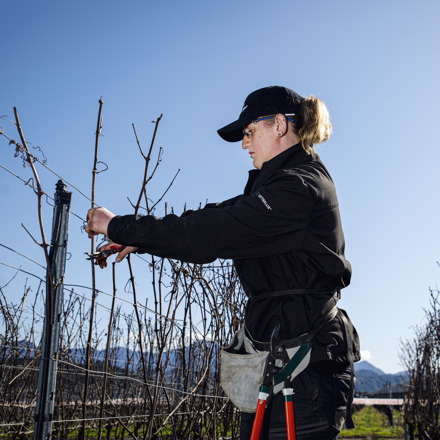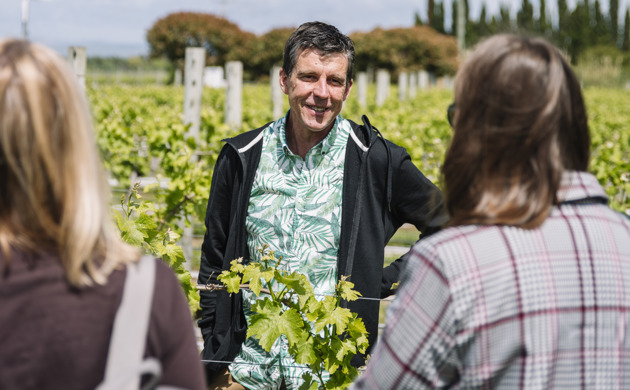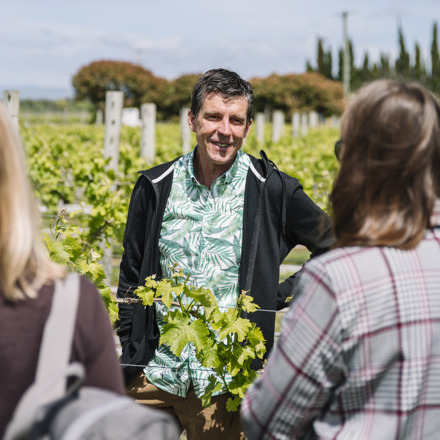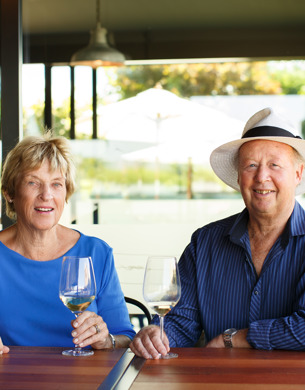Sophie Preece

Nigel grew up on a farm at Muriwai, just down the road from a nascent West Auckland wine industry, and worked at Cooks Wines’ Riverhead vineyard in his holidays, and then again after leaving school. When Maté contacted him in 1974, “it was just a natural progression to go on with the wine side of it”, he says. “Maté was a very strong sort of person. A very generous person. But you had to do what you had to do and if you didn’t do it, he let you know.”
“It’s been a great ride and I hope it goes on for a bit longer yet.”
The hands-on teenager was eager to do his best, and within a few years had turned a grafting hobby into a grapevine nursery at Waimauku, heading to his hothouse after work each day, and grafting up to 100,000 plants a year, including Chardonnay vines for Kumeu’s Maté, Hunting Hill, and Coddington blocks. “It was a big learning curve to get that right and it’s paying off with some of those older vines now.”
Kumeu River today is a far cry from San Marino in the 1970s, when they produced fortified wines from hybrid varieties. “But Maté had a small block of Chardonnay around the back of the house, which was interesting for those days,” Nigel says. He recalls tasting Chardonnay from the “fantastic” 1976 vintage, fermenting in a 240-gallon milk tank in the distillery room. It was “lemons and limes and zesty and bright… I had never seen anything like it before.” The heat in the room meant those impressions were long gone by the time the wine was bottled, but it left a potent imprint.
Nigel taught Maté’s son Michael (now MW and Kumeu River Winemaker) how to wash the winery floors as a “youngster”, and welcomed the sea change in company philosophy when Michael graduated from Roseworthy in 1981 and went on to work in France, nurturing dreams of Kumeu River Merlot, before Burgundy-influenced Chardonnay won out for Auckland’s conditions. In 1985 they stopped using cultured yeast, and were undeterred by the ‘85 Chardonnay performing poorly at a national wine competition. “It was so very, very different to what was being made at that stage,” Nigel says. “It didn’t have the tropical fruit and all the other things, but the palate was creamy and textural, and the nose was interesting and toasty.”
The 1986 government vine pull was timely, and replanting continued into the 1990s, predominantly with Chardonnay. That kept the nursery busy and Nigel became involved in New Zealand’s Vine Improvement Group and absorbed by clonal selection, assessing each option against soil types and topography, while also considering Kumeu River’s requirements. He closed the nursery 16 years ago, and replanting has continued with newer clones like 548, but “most of the vines here are from the nursery we had”, he says.
“After each harvest Michael and I sit down and try and think about what we can do to improve the flow of the whole thing,”
In 2001, all Kumeu River’s wines moved to screwcap, after extensive inhouse cork tests revealed an alarming level of taint. The move was akin to finetuning a stereo, and landing on something pristine and bright, Nigel says. “You move the dial and go, ‘wow that’s amazing’.” A comparative tasting with
Burgundy wines in London in 2015 was another major moment, with critics and wine writers putting Maté’s, Coddington, Hunting Hill, and Estate Chardonnays above a range of Premier Cru and Village Burgundies from the best producers in every flight, barring one, which was first equal. “It was pretty
amazing”, Nigel says. “You get an immense sense of pride when you get that feedback.” They went from having some wine left over each year to sell, to having everything on allocation. But there’s no resting on laurels, with myriad projects and process changes at all times. “After each harvest Michael and I sit down and try and think about what we can do to improve the flow of the whole thing,” Nigel says.
Half a century in, he has no regrets about joining the “amazing” Brajkovich family, nor plans to leave the cellar. “The first time someone asked about retirement, I just about bloody fell over backwards.”
This article was first published in New Zealand Winegrower magazine issue 146 and is republished with permission.












